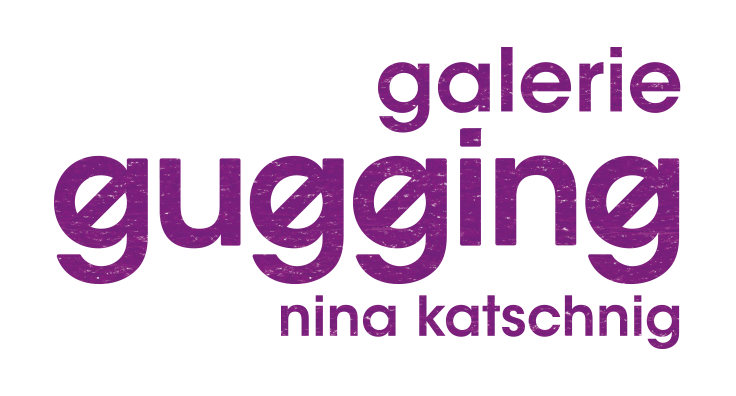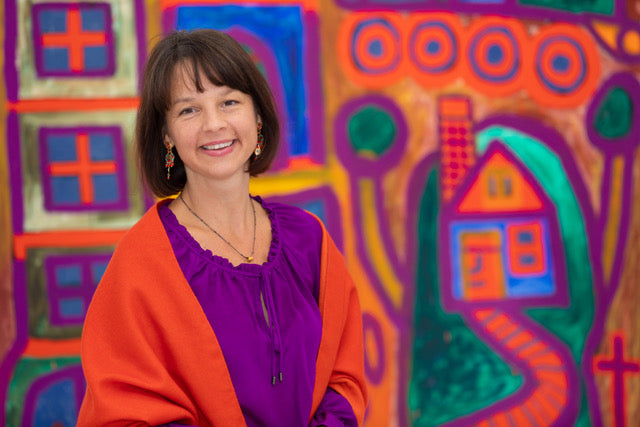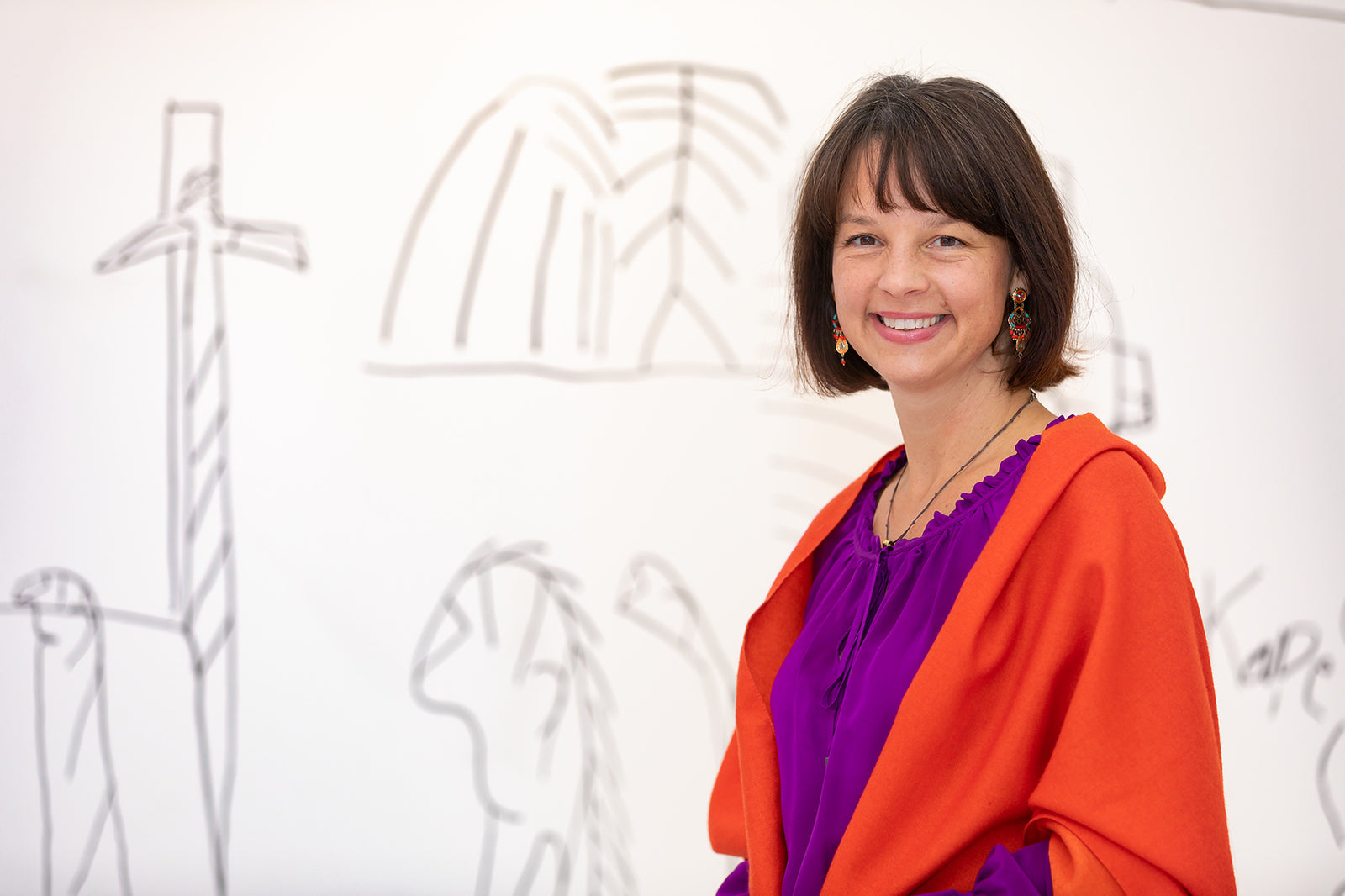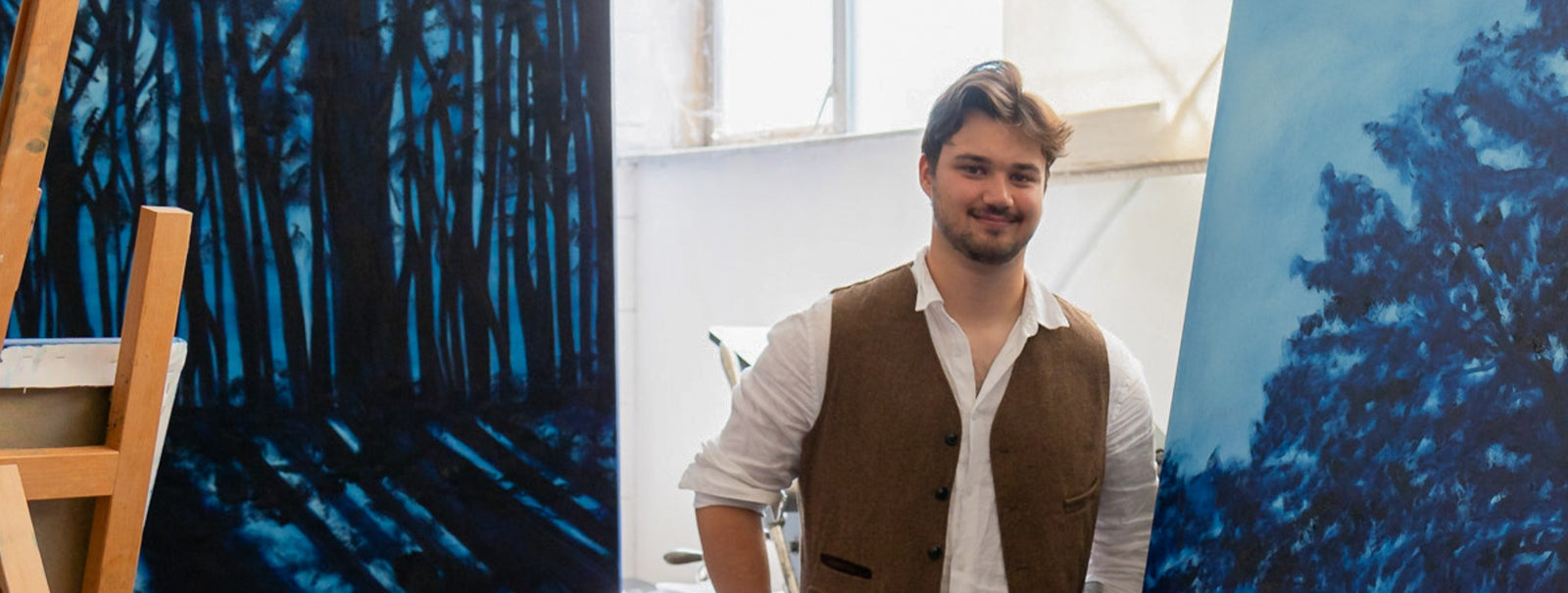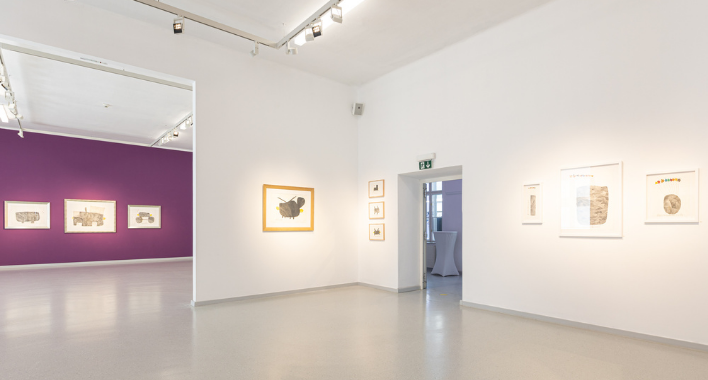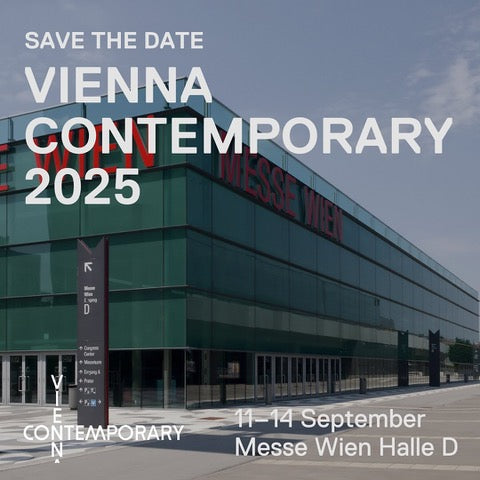An Interview with Mag. Nina Katschnig: Director of Galerie Gugging, Curator, Author, and Founder of Gugging Museum.
Date: Summer 2025
Place: Galerie Gugging
Interview:Michael Brunner
Gugging is a place with a special magic and a renowned hotspot for art brut. For 25 years, Nina Katschnig has been managing the agenda of thegalerie gugging, which celebrated its 30th anniversary last year. In addition to managing the gallery, organizing exhibitions, curating the works of theGugging Artists and other agendas, the Carinthian-born has built up a familial team of employees over the past years with whom she has consistently expanded the radius and significance of the creative venue. Today, theGugging Artists enjoy international recognition and are represented worldwide at art fairs from Paris to New York. An empathetic, appreciative, respectful & loving togetherness is a lived reality here and this refers not only to the employees, but in particular also to the artists.
This Generic Interview is for free use, may be quoted, copied, posted, and reused and was created with the intention to offer answers to basic questions about thegalerie gugging & its director Nina Katschnig and to try to get to the bottom of the sense of life of this special place. Enjoy and thank you for supporting us in this endeavor.
When was it clear to you that everything in your life would revolve around art?
That wasn’t clear at all at first. Although a friend had already predicted it to me when I was a student. I’ve always enjoyed visiting exhibitions myself – but somehow it was never really obvious to me.
So when and why did you first come to Gugging?
That was in spring 1997. I studied education & psychology and wrote my diploma thesis on “Schizophrenia, Art & Art Therapy”. My then supervisor in Klagenfurt gave me the assignment to have a closer look at theHouse of Artists, because Gugging, as far as art & psychiatry are concerned, has taken a pioneering role worldwide, and still does, and the founder Leo Navratil has written two literary works about it. So I came here for the first time rather reluctantly.
What were your first impressions of this special place?
I remember it very well. When I arrived, I saw theHouse of Artists and thought to myself: unbelievable! I thought it was fantastic. The artists were there, and everyone was friendly and nice or not, it was just a very special atmosphere. August Walla was the first to approach me and playedMensch ärgere Dich nicht with me, constantly changing the rules. Nevertheless, I won and he never played with me again. That day I also stood in Walla’s room and was overwhelmed by the cosmos that presented itself to me. I was surprised by what is allowed to be in the psychiatric context, I had not expected it. I left that day inspired and thought to myself, maybe I should do an interview with the director here after all? And as it was meant to be, the very next day I got the chance to talk to Prof. Dr. Johann Feilacher in person. And in the middle of the conversation I suddenly heard myself say: “I would like to work here!” – that surprised me at the time.
Since when exactly has Gugging Art existed?
Initial works already existed in the 1950s and 1960s. The first time they were exhibited was in 1969, when Arnulf Rainer presented his private collection ofGugging Artists for the first time in an exhibition at the Vienna Secession. Thus, for the first time, the public’s focus in this country was consciously drawn to art brut, this raw, unadulterated art. Works by Oswald Tschirtner and August Walla were already shown at that time. Then in 1970 there was the first exhibition ofGugging Artists under the titlePareidolien in the Gallery nächst St. Stephan and due to the success, the exhibition activities have always developed.
How was it determined at that time which artists were promoted and which were not?
This was a challenge, because in the 50s and 60s there were at times up to 700 patients in Gugging, who were cared for by just two doctors. Thus, the artistic director at the time, Leo Navratil, conducted drawing tests with all the Gugging Artists according to the English model and found out that some of them couldn’t be assigned due to their complete independence, because they didn’t fit into the given categories at all. Subsequently, on the advice of artist friends, he sent some of the Gugging works directly to the art brut founder Jean Dubuffet, who was also the name giver of the art movement, in order to obtain his expert opinion and he was enthusiastic.
How then did the “House of Artists” come into being?
In 1981, Prof. Dr. Leo Navratil founded theCenter for Art and Psychotherapyfor 18 of his most talented patients. When Prof. Dr. Johann Feilacher then took over the administration in 1986, it was renamed theHouse of Artists. In 1990, the group ofGugging Artists was awarded the Oskar Kokoschka Prize, an important Austrian award for their services to contemporary art. When I joined in 1997, theHouse of Artists was actually already too small, but the house next to it had just become vacant. Today, theArt Brut Center is located there.
Art brut, according to Wikipedia’s definition, is a collective term for “self-taught art by amateurs, children, people with mental illness or intellectual disability.” Have some of the Gugging Artists enjoyed an education?
No, no one at all, and they are only supported and guided in that they are provided with materials and a pleasant workplace. So here, only framework conditions are created, and the artists are supported in their natural abilities.
How can one imagine the artists living together?
What is offered to the artists in theHouse of Artists is a day structure, where they live like an extended family. Currently there are 14 artists, who are accommodated in double rooms, because single rooms are not so popular here. It’s a nice togetherness, where occasions like Easter, Christmas or birthdays are celebrated. The time between daily meals is often used for creative activities. To draw or paint, they either come to thestudio gugging, which is on the same floor as the gallery, or they stay in theHouse of Artists. Günther Schützenhöfer prefers to come to my office to tell me his latest stories while he draws.
Who are the most important protagonists of Gugging art brut?
Historically there are different generations. On the one hand, there are the classicGugging Artists, who are internationally recognized and have already experienced their flights of fancy; these include Johann Hauser, Oswald Tschirtner and August Walla. Today, when someone somewhere in the world organizes a representative art brut exhibition, these three protagonists are usually always there. In the meantime, however, the next generation is moving up the ranks, including Johann Garber, Franz Kernbeis, Johann Korec, Heinrich Reisenbauer and Karl Vondal. And then there is a younger group, which includes Laila Bachtiar, Manuel Griebler, Helmut Hladisch, Günther Schützenhöfer and Jürgen Tauscher. There is a time for everything, and it always takes a while before artists can move into the center of attention to leave their mark.
How would you describe the significance of art brut in today’s world and who are its most important representatives?
Nowadays art brut is no longer an unknown underdog but has long since arrived in the contemporary art world and is represented in museums, galleries that would probably not have shown art brut in the past, or renowned exhibitions such as theBiennale di Venezia. Some of the world’s most famous representatives of art brut art are the Swiss-born Aloïse Corbaz and Adolf Wölfli, the Americans Martín Ramírez and Bill Traylor, but also theGugging Artists Johann Hauser, Oswald Tschirtner or August Walla are world famous. When Walla died, the New York Times wrote an obituary especially in his honor. Another success story is that of Leopold Srobl. Thegalerie gugging presented the artist from Mistelbach for the first time in 2016 as part of an exhibition. He has now even been purchased by the MoMA in New York for its collection and was represented last year at the 60th international art exhibitionLa Biennale di Venezia.
In recent years, you have expanded the pool of artists on display to include external artists in addition to those from Gugging. How did this come about?
We have been doing this since 2009, when we had the corporate form changed so that we could also exhibit other artists and broaden our horizons. The first exhibition we did back then wasafrican american artists, which we presented together withgugging classics. In 2020, our art brut veteran Oswald Tschirtner took the Cuban art brut artist Misleidys Castillo Pedroso by the hand, so to speak, in the joint exhibition... powerful female – delicate male ... and this symbiosis worked well.
There is surely much that one can learn from these wonderful, talented and seemingly always in the moment living creative artists?
What I learned is patience and that the artists have their own timetable. They actually teach you to always be in the now, because that’s where they are and that’s the only place, they can be creative. It’s fascinating to see them create something out of nothing in front of your eyes and be completely present. What they do, they do with dedication, when they draw, they draw and when they eat, they eat. They always remain true to themselves.
Is there a special experience with the artists that you would like to share?
There are so many, August Walla once said something funny to a photographer who asked him to laugh for a picture, he wanted to take of him. Walla replied in a really grumpy way: “Why should I laugh, you can’t hear it on the Büdl (photo) anyway?”
When you wander through the gallery, you are really infected by the spirit and the familial environment. Is there a secret recipe you use to guide your employees?
Three things are important to me: enjoying what you do, connecting with each other, and that everyone can be who they are. So everyone contributes to us with their individual talents. It’s about the gifts that everyone brings to life and that they conduce here at thegalerie guggingfor the benefit of everyone.
What does your home look like and is there such a thing as a favorite picture
Basically, I don’t live much differently at home than I do here. I am surrounded by works of art that give me pleasure. Of course, it also happens that I occasionally buy a work by a “non-Gugging Artist”, but basically these are then mostly art brut works by friendly gallery owners & artists. And there is no such thing as a favorite painting, I love them all and could not live without pictures.
Gugging has been visited by world stars time and again. If it was David Bowie in the 90s, now Klaus Maria Brandauer also paid a visit to the galerie gugging. How did it come about?
That was the idea of our artistic director Michael Martinek, who leads our special edition series. He knows the music scene very well and always has great ideas and the courage to approach the artists directly. For example, in 2018 Klaus Maria Brandauer or in 2019 Manuel Rubey & Gerald Votava came and delighted us in a small setting. Through this additional cultural offer, where we offer music or even readings, people find their way to us who would otherwise rather not come here. It’s an interesting addition to thecurated by-exhibitions that we offer at regular intervals and which give me great pleasure.
Your gallery celebrated its 30th anniversary in 2024. Do you personally still have dreams for the future?
Internationally, the charisma of theGugging Artists is already great, but in our own country the prophet may become even better known; that is what I wish for our artists and an exhibition at theMuseum of Modern Art (MoMA) in New York.
Thegalerie gugging doesn’t receive any state subsidies and is an independent, completely autonomous operation such as any other gallery with the usual conditions for artists.
We sincerely thank our business partners for their support and are open for cooperation.
Further information:galeriegugging.com
Further information about our artists & artworks: galeriegugging.com/pressebereich
